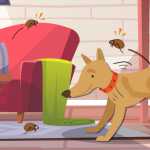How to Humanely Capture Mice and Rats
Rodents are a common pest that can be difficult to track down or remove from your home. Mouse and rat traps are designed to bait and capture these pests, and here at ClearFirst, we always aim to humanely deal with rodents in your home.
If you’d like to try dealing with the odd rodent on your own, we’ve put together this step-by-step guide for making and using a humane rodent trap.
Step 1: Get a cardboard or plastic tube
A cardboard tube from a roll of toilet paper or kitchen roll is the ideal basis for your rat trap.
A plastic tube can be used too, so long as it isn’t too sturdy that it will fully support the rodent’s weight once in place.
Step 2: Flatten the bottom of the tube
The aim is to make the bottom of the tube flat enough so it rests easily on a table or counter top. Press down along one side of the tube to create a flat bottom, this will be the platform to keep the mouse steady as it noses its way along towards capture.
Step 3: Add bait
A trap is nothing without some enticing rodent bait – but don’t rush for the cheddar just yet; mice and rats aren’t as enamored with cheese as we are led to believe. Instead, they’re more likely to go for other foods such as peanut butter, chocolate, bacon or other meats.
Small portions are always best, so pick a bait – we recommend starting with peanut butter – and place a small dollop on one end of the tube.
Step 4: Place the tube
Once baited, you need to balance the tube on an elevated edge – a table or counter top is best. Leave enough space below to fit some kind of large receptacle – a deep bucket or bin, for instance – and make sure the baited end of the tube hangs over the edge.
The tube might not stay steady on the table, so you can lightly tape down the other side if necessary. If you do this, test the trap so it will still fall once the mouse reaches the bait.
Step 5: Place a bucket or bin under the trap
Once the trap is triggered you’ll need somewhere for the rodent to land without it being able to escape back into the house. Get a large bin or bucket and put it directly under the bait. The rodent should end up scurrying through the tube, heading for the bait, then fall under its own weight into the bin.
Step 6: Wait for results
It may not be immediate, but eventually your guest mouse or rat should take the bait. They usually roam the house at night, so make sure to check the trap each morning and every time you return to your home.
Also check to see if the bait is still in place, or if the tube is still secure. Adjust it as you go and be patient. If one bait doesn’t seem to be working, try something else – a small piece of dry meat, for example.
Step 7: Release your capture
Once you have captured a live rodent, deal with it quickly. You should release it away from your home, but in a safe environment. Try to find a wooded area at least a mile away from your property and release it with a bit of food. That way you can be sure you’ve dealt with your pest in the most humane way possible.
Step 8: Call in the professionals
Building and successfully using a humane trap can be incredibly satisfying, but if you’re dealing with rodents in groups then this will likely be too time consuming to handle. And if more rodents appear after releasing one you’ve already caught, then you need to treat the source of the infestation – and that’s where the pros come in.
Professional pest control technicians can find, control and prevent rodent infestation without any fuss. With a range of humane traps, techniques and equipment to hand, you can rely on the pest control experts to keep your property safe, clean and free from rats and mice – without ever bringing them to harm.
ClearFirst Pest Control provide discreet and humane rodent removal for domestic and commercial properties. Our specialists will act promptly and with proactive focus to locate and eliminate an infestation, and are on hand to provide advice for the prevention of future occurrences. To discuss your rat or mouse problem with us, get in touch today.



